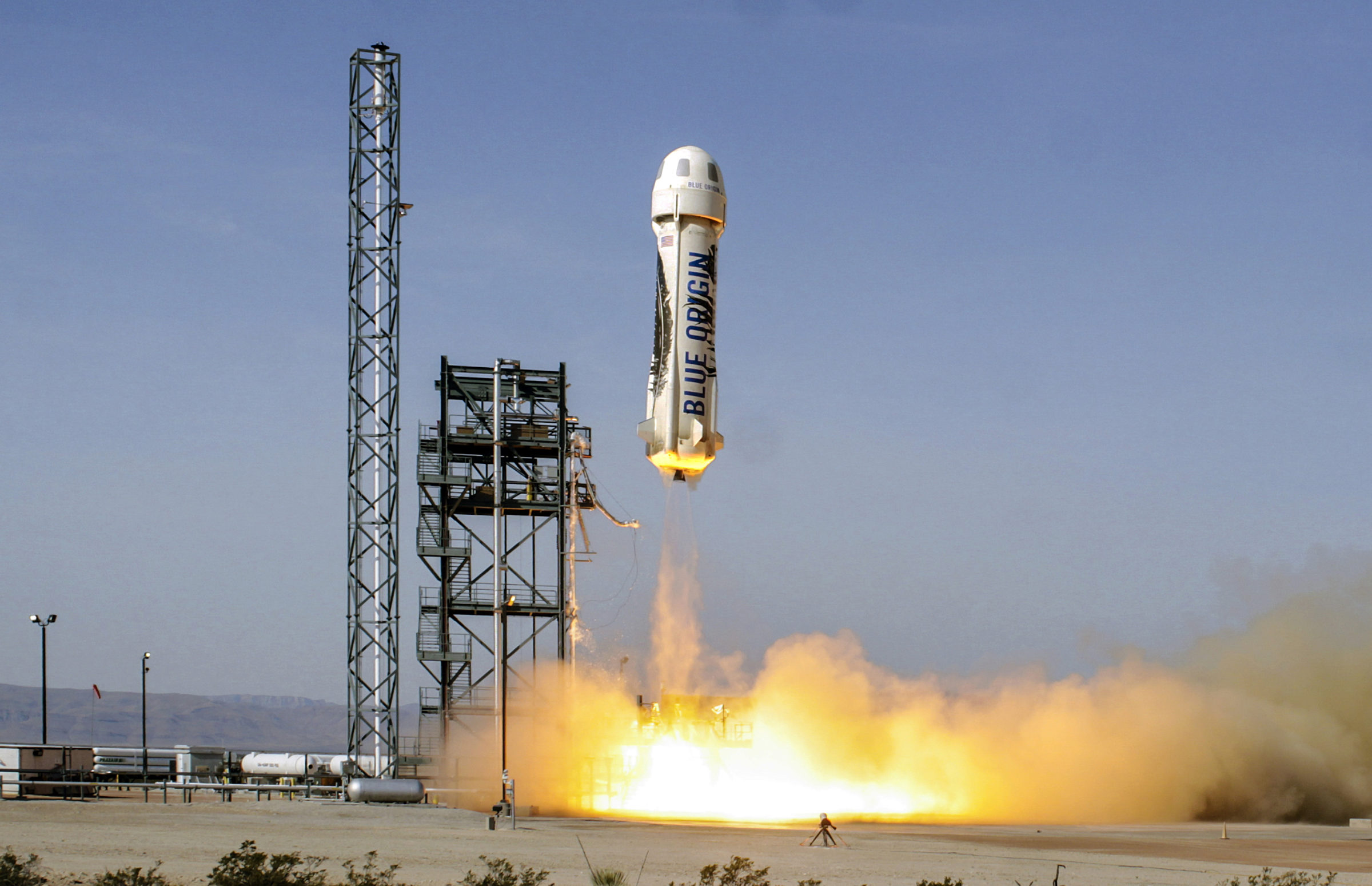The Planetary Society • Jul 13, 2021
Blue Origin and Virgin Galactic: their space tourism flights explained
On Sunday, July 11, Richard Branson’s Virgin Galactic kicked off the first of two back-to-back space tourist flights. Blue Origin’s New Shepard launch vehicle will lift off a little over a week later on July 20.
Because the flights are so close together, newcomers may find it a little confusing to get the details straight. Basically, Virgin Galactic and Blue Origin are competing for the same goal: to launch passengers and science experiments into suborbital space. This means that both vehicles cross the boundary into outer space but don’t attain orbit, mostly because of the speed at which they’re traveling.
With their first fully crewed launches, both companies hope to create a larger market for space tourism, in which passengers — usually civilians, not trained astronauts — purchase seats in exchange for a recreational flight. It’s unclear how much tickets will sell for in the future since current prices are much higher, but in Blue Origin’s case, they’ve climbed into the millions.
Though Virgin Galactic and Blue Origin have similar overarching ambitions, there are some stark differences in their approaches to spaceflight. Here’s a brief overview:

Launch vehicle
Virgin Galactic’s SpaceShipTwo Unity (VSS Unity) is a suborbital spaceplane that is released at about 15,000 meters (roughly 50,000 feet) by a carrier jet aircraft called WhiteKnightTwo. WhiteKnightTwo which takes off on a runway, similar to planes at an airport.
Blue Origin’s New Shepard is made up of a booster rocket and capsule, so its launch and landing procedures are more in line with those of a typical rocket launch.
Maximum altitude
VSS Unity reaches about 86 kilometers (about 54 miles) at its highest point. New Shepard flies up to 105 kilometers (about 65 miles).

Time weightless
On July 11, the pilots and the crew on VSS Unity experienced about four minutes of weightlessness. Passengers on New Shepard are expected to experience about three minutes of weightlessness.
The boundary of space
Where space “begins” is very murky territory. It starts at different altitudes, depending on who you ask.
NASA and the U.S. military consider space to start at roughly 80 kilometers (50 miles) above Earth's surface. However, the Fédération Aéronautique Internationale (FAI), which oversees air sports and human spaceflight records, considers the Kármán Line — 100 kilometers (about 62 miles) above Earth’s surface — to be the start of space. Many other organizations also consider the Kármán Line to be the beginning of space, though even the placement of the 100-kilometer threshold has been debated by scientists.
By NASA’s definition, Virgin Galactic’s VSS Unity did indeed fly into space as it exceeded the 80-kilometer (50-mile) threshold. But as Blue Origin pointed out, it did not cross the Kármán Line, which New Shepard will pass on its July 20 flight.
Liftoff site
VSS Unity takes off from the Spaceport America launch site near Truth or Consequences, New Mexico. New Shephard will lift off from Blue Origin’s private West Texas launch facility.
Crew size
The SpaceShipTwo flight on July 11 fit two pilots and six passengers; New Shepard flies without a pilot and will fit six passengers.
Training time for passengers
Providing you have the money for a ticket, it doesn’t take long to train to become an astronaut with either company: just three days for Virgin Galactic and four days for Blue Origin.
Cost for a seat
Passengers are initially paying $250,000 for a seat on VSS Unity; the first seat on the upcoming New Shepard flight was auctioned off for $28 million. Some passengers on that flight aren’t customers, however — Wally Funk, a “Mercury 13” pilot, was invited to fly on New Shepard as an “honored guest.”
Science payloads
During its July 11 flight, VSS Unity carried tubes of Arabidopsis thaliana plants on behalf of NASA. The tubes, which have been returned to Earth, will allow scientists to study the effects of microgravity on the samples.
It’s unclear whether New Shepard will carry science payloads on its first fully crewed mission, but Blue Origin has flown some on prior test flights.
Support our core enterprises
Your support powers our mission to explore worlds, find life, and defend Earth. You make all the difference when you make a gift. Give today!
Donate

 Explore Worlds
Explore Worlds Find Life
Find Life Defend Earth
Defend Earth


